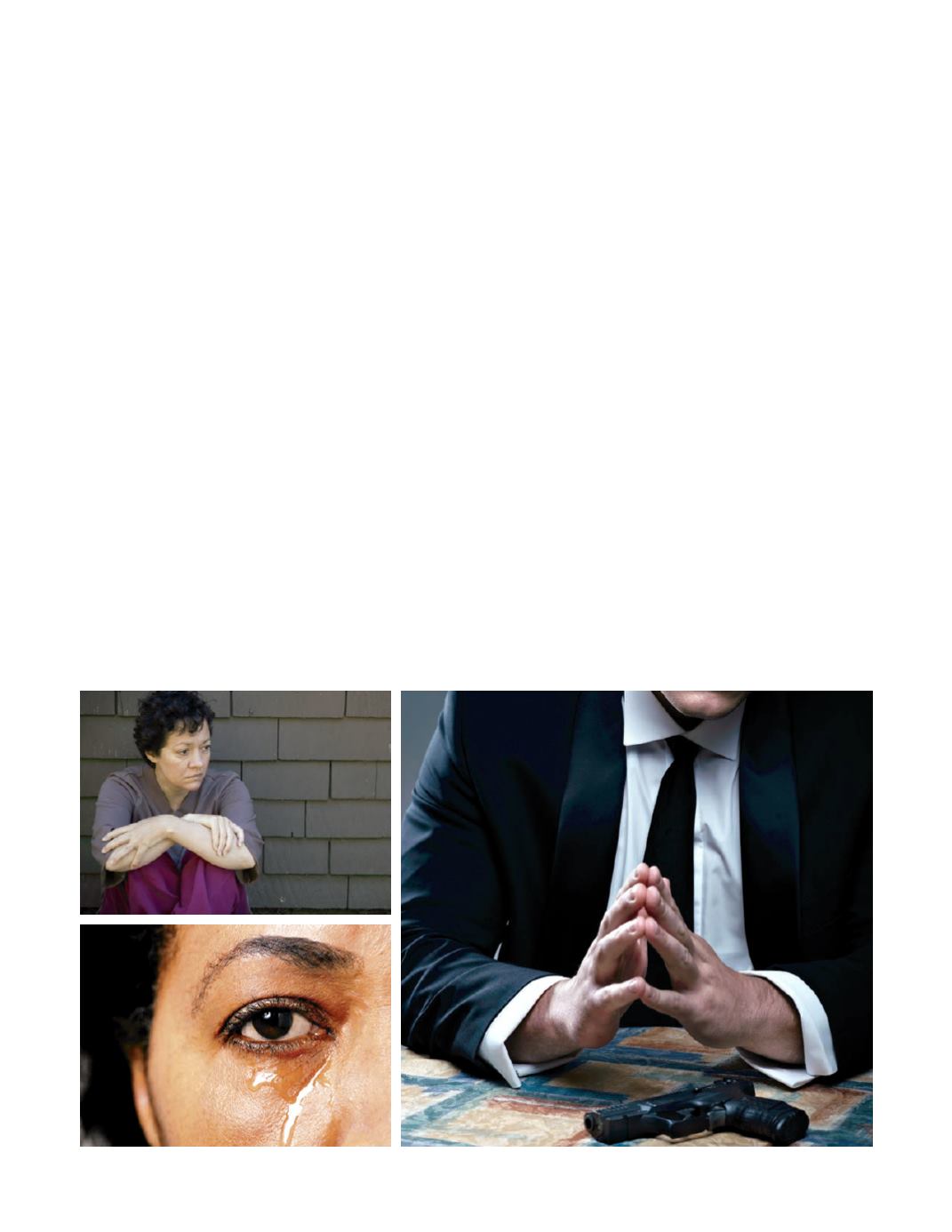
60
christian counseling today
Vol. 21 no. 2
that they typically choose more lethal means for
killing themselves. Women more often choose
poisoning (drug overdose) and men mostly use
firearms, which was the most common method
of death by suicide in the U.S. at 50.9%.
When it comes to age, there is much
discussion about the issue of suicide in youth;
however, this population is not necessarily the
most at risk. There is also a high rate of suicide
among senior Americans (age 85 and older),
where the rate is second highest for this age
group. However, the fastest growing demo-
graphic, and currently the highest, includes
middle-aged Americans from 45 to 64 years old.
Racially, whites or Caucasians have the highest
rates, followed by Native Americans and Alaska
Natives, though these numbers are significantly
lower in Asian, African-American, and Hispanic
cultures. To summarize, white males accounted
for 70% of all suicides in 2013, with the
majority being over the age of 45.
3
Why?
Perhaps the most challenging aspect of suicide
is understanding why people reach the point
of desperation and willingly choose to end
their lives. Considering every biological and
neurological instinct in all living creatures is
to preserve life and survive, in many ways suicide is still a mystery. The
forces pushing someone to stop living must override every natural instinct
toward self-preservation. The question of why is also the aspect that often
haunts survivors and complicates their grief process. First, it is critical to
understand that up to 90% of those who complete suicide have a treat-
able mental illness at the time of their deaths.
4
Presenting problems such
as major depression, bipolar disorder, schizophrenia, and post-traumatic
stress are what bring many suicidal people to the point of desperation.
Those struggling with prolonged mental health issues, including some
personality disorders, create the highest risk for chronic suicidal ideation.
Our greatest weapon against suicide remains better screening, assessment,
and treatment of mental illness. It is estimated that in 2010, 7.9 million
adults in the United States suffered from major psychological disorders
(approximately 3.3% of the population at that time). About half of those,
or 3.9 million, were not receiving treatment. In addition to suicide, it is
believed that severe mental illness is a causal factor for approximately 10%
of homicides and as many as 50% of mass killings
.5
However, even with those startling statistics, we understand that
many who are not at a critical stage also die by suicide. Recent research
and theories of noted psychologist and suicide expert, Dr. Thomas Joiner,
offer new and revealing insights to help clinicians and caregivers better
understand what is going on in the minds of those who choose to die by
suicide, potentially improving both assessment and treatment protocols.
In his book,
Why People Die by Suicide
, Joiner outlines his Interpersonal-
Psychological Theory of Suicidal Behavior. This model includes three
important components that must be present in order for there to be a true
risk of intentional death. The first two components lead to a “desire to
die.”
6
The first factor Joiner describes is a low sense of belonging. This can









